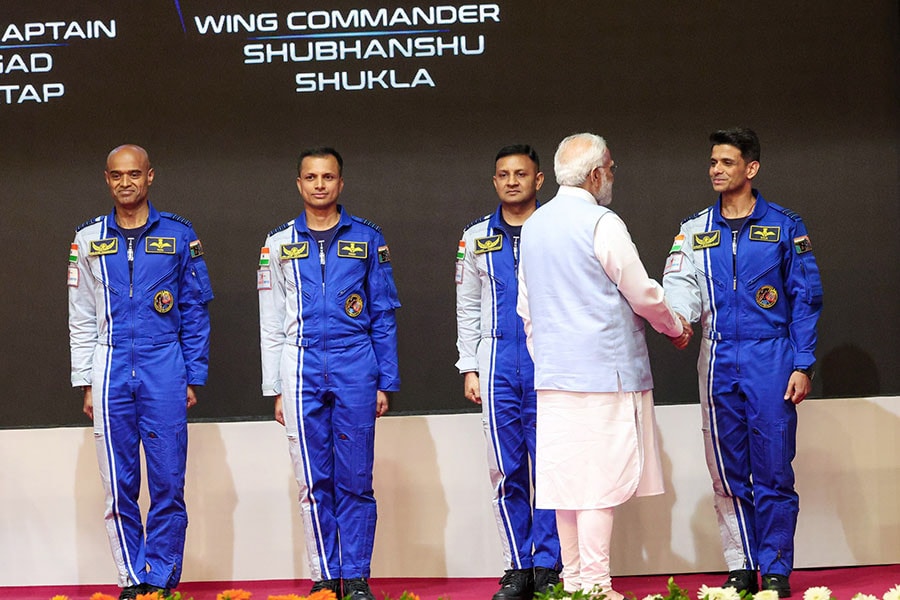
Explained: India's Gaganyaan mission
Prime Minister Narendra Modi revealed the names of the astronauts selected for India's first crewed space mission. Here's a low-down on the programme, the chosen astronauts, their training, and potential challenges
 PM Modi with the four chosen astronauts, three of whom will man the Gaganyaan mission. Image: PIB
PM Modi with the four chosen astronauts, three of whom will man the Gaganyaan mission. Image: PIB
On August 23, 2023, Indian became the first nation in the world to successfully perform a soft landing on the lunar south pole with Chandrayaan-3. In another first, the Indian Space Research Organisation (ISRO) is gearing up for its first crewed Indian space mission, Gaganyaan.
During his trip to the Vikram Sarabhai Space Centre in Thiruvananthapuram, Kerala, Prime Minister Narendra Modi on Tuesday announced the names of the astronauts set to crew the spacecraft, all of whom hold ranks as either wing commanders or group captains in the Indian Air Force (IAF) and boast significant experience as test pilots.
What is the Gaganyaan mission?
The Gaganyaan project aims to send a team of astronauts into space, orbiting 400 km above Earth for a three-day mission, and safely return them by landing in the Indian Ocean. According to ISRO, the key elements needed for the Gaganyaan mission include developing critical technologies like a safe launch vehicle for astronauts, a life support system to keep them comfortable in space, a way for the crew to escape in case of emergency, and plans for their training, recovery, and medical care.ISRO has been conducting various tests in preparation for the upcoming mission, and in a significant one which took place in October last year, they successfully demonstrated the crew's ability to safely evacuate the rocket in the event of a malfunction. Following this achievement, the space agency announced plans for a test flight in 2024, where a robot will be sent into space, paving the way for human astronauts to embark on their journey in 2025.
The Gaganyaan project, named after the Sanskrit term for a vehicle to the sky, has been developed with an investment of $1 billion, according to the BBC. Its success would mark India as the fourth nation to achieve human spaceflight capability, following Russia, the US and China.








